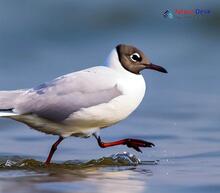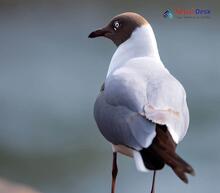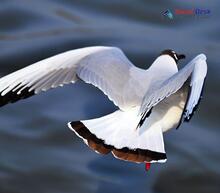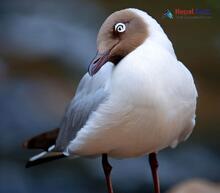Chroicocephalus: Exploring the Fascinating World of Seagulls in Nepal
Nepal, a country known for its breathtaking landscapes and fascinating wildlife, is also home to an intriguing species of bird: the Chroicocephalus. This genus of seagulls boasts striking features and unique behaviors that make them stand out in the world of avian creatures. Here, we will delve into the captivating world of Chroicocephalus, touching on their classification, common features, evolutionary relationships, and the nomenclature that defines them.
Classification and Nomenclature
Chroicocephalus is a genus within the larger family Laridae, encompassing various species of gulls. The name itself is derived from the Greek words "chroikós," meaning colorful or variegated, and "kephalos," meaning head. This aptly describes these birds' striking markings, particularly around their head area.
Common Features
The physical characteristics shared by most Chroicocephalus species include medium-sized bodies, long wings, rounded heads, and sharp bills. Their plumage tends to be a mix of whites, grays, and blacks — giving them a sleek yet conspicuous appearance. One notable feature in some species is their distinctly red or orange feet, which contrast strikingly with their largely monochromatic bodies.
In terms of behavior, Chroicocephalus gulls have an opportunistic lifestyle. They are known for scavenging food rather than hunting prey. As opportunistic feeders present across various landscapes in Nepal – from freshwater lakes to coastal lines – they showcase impressive adaptability skills.
Evolutionary Relationships
When it comes to evolutionary relationships within the genus Chroicocephalus, genetic studies have revealed intriguing links. For instance, molecular data show strong support for relatedness among Chroicocephalus ridibundus (black-headed gull), Chroicocephalus genei (Slender-billed gull), and Chroicocephalus brunnicephalus, a Himalayan species found exclusively in Nepal and other nearby regions.
These findings highlight the diverse lineages within the genus, as well as convergent adaptations to differing ecological niches that have come about over millions of years of evolution.
Nomenclature and Conservation
The classification of various Chroicocephalus species has undergone revisions over time, with some species previously belonging to the genus Larus being reclassified under Chroicocephalus. This highlights the importance of ongoing research to better understand these unique seagulls' evolutionary history and relationships.
Conservation efforts are also crucial for protecting Chroicocephalus populations, particularly the endemic species such as the Himalayan gull. As habitat loss and climate change impact their natural environments, it is essential that we monitor and conserve these avian wonders.
In conclusion, the world of Chroicocephalus in Nepal is one filled with captivating features, intriguing evolutionary relationships, and ever-changing nomenclature. As bird enthusiasts or nature lovers, understanding and appreciating these remarkable creatures offers a window into their natural world and how it interconnects with our own.




